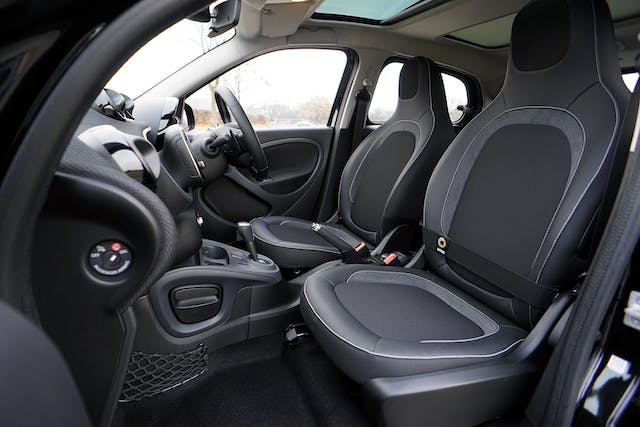11.15.23
Buying A New Car? Don’t Forget to Check for Damage

What to look for before agreeing to buy a vehicle.
When buying a brand new car, the typical expectation is that vehicle will be in pristine condition. In most cases, buyers drive off in a damage-free car. However, some cars are damaged in transit between the manufacturer and the dealer’s lot. Savvy buyers fully inspect a new car before signing the sales contract—here’s how.
View the vehicle in daylight
Whenever possible, inspect the car in daylight on a sunny day. These conditions will help you detect any scratches or blemishes. Also, be sure the car is dry because water can mask imperfections. It’s okay to ask the dealer to dry the vehicle.
Inspect the exterior and the interior
Exterior flaws to look for include dents, scratches and mismatched body parts or trim. Ensure that side mirrors and other trim and accessories are securely attached.
When inspecting the interior, pay close attention to upholstery, headliner and carpeting. Look for any stains, tears or defects.
Run through the systems
Before taking any vehicle on the road it’s a good idea to check all the systems and controls. Ask the salesperson to guide you through everything controlled from the driver’s seat: automatic windows, heat/AC, lights, sound system, seat position, etc. To be thorough, ensure that automatic door and window controls work on each door.
Verify that the driver assist system works properly, including back-up and surround view cameras.
Have the salesperson guide you through what’s under the hood to identify how to check the oil and replenish the windshield washer fluid. Also, have them locate the spare tire. (Note: Some newer cars are equipped with a sealant kit rather than a spare tire.)
The importance of inspecting before taking possession of the car
Take your time with due diligence. If you discover a problem after you take the car off the lot there’s a possibility that it wasn’t there before you took ownership; you’ll have a tougher time getting the dealer to address the problem. The time to thoroughly inspect a car is before you seal the deal.
If you find a flaw
Tell the salesperson about any damages or flaws right away. In some cases, the dealer may offer a discount instead of correcting a problem. It’s up to the buyer if the concession is worth it.
If the dealer promises to fix a problem later, get it in writing. Be sure the damage and the remedy are clearly defined, as well as the timing for the fix.
When you’re satisfied with the vehicle
Only after you’ve inspected the vehicle, any problems have been corrected (or there’s a written plan for correcting them) and you are satisfied, should you sign a sales contract.
If you need financing for your ride, we’re here to help with a competitive auto loan.
All loans subject to approval. Rates, terms and conditions are subject to change and may vary based on credit worthiness, qualifications and collateral conditions. Federally insured by NCUA.


